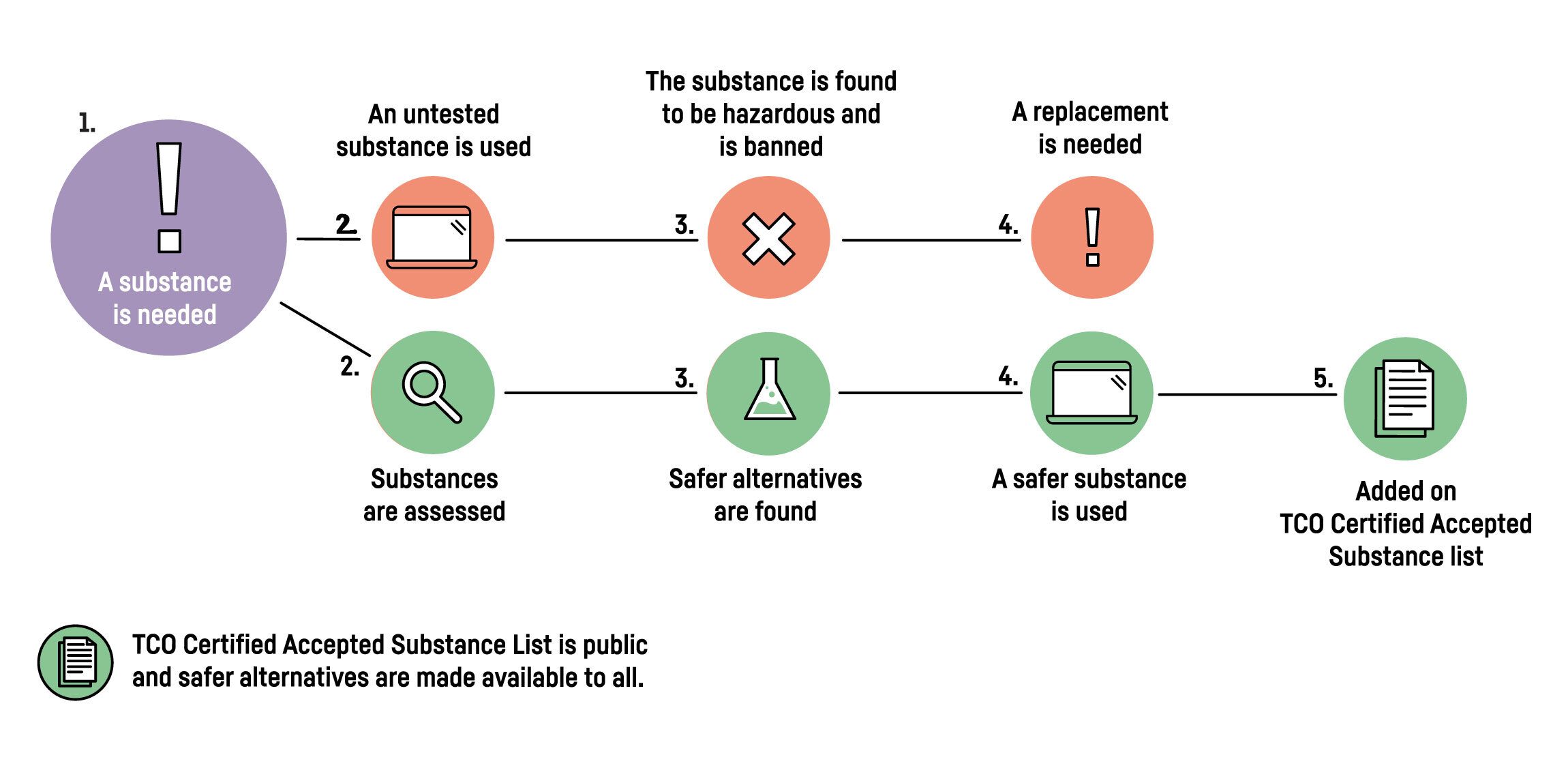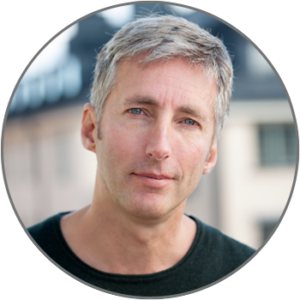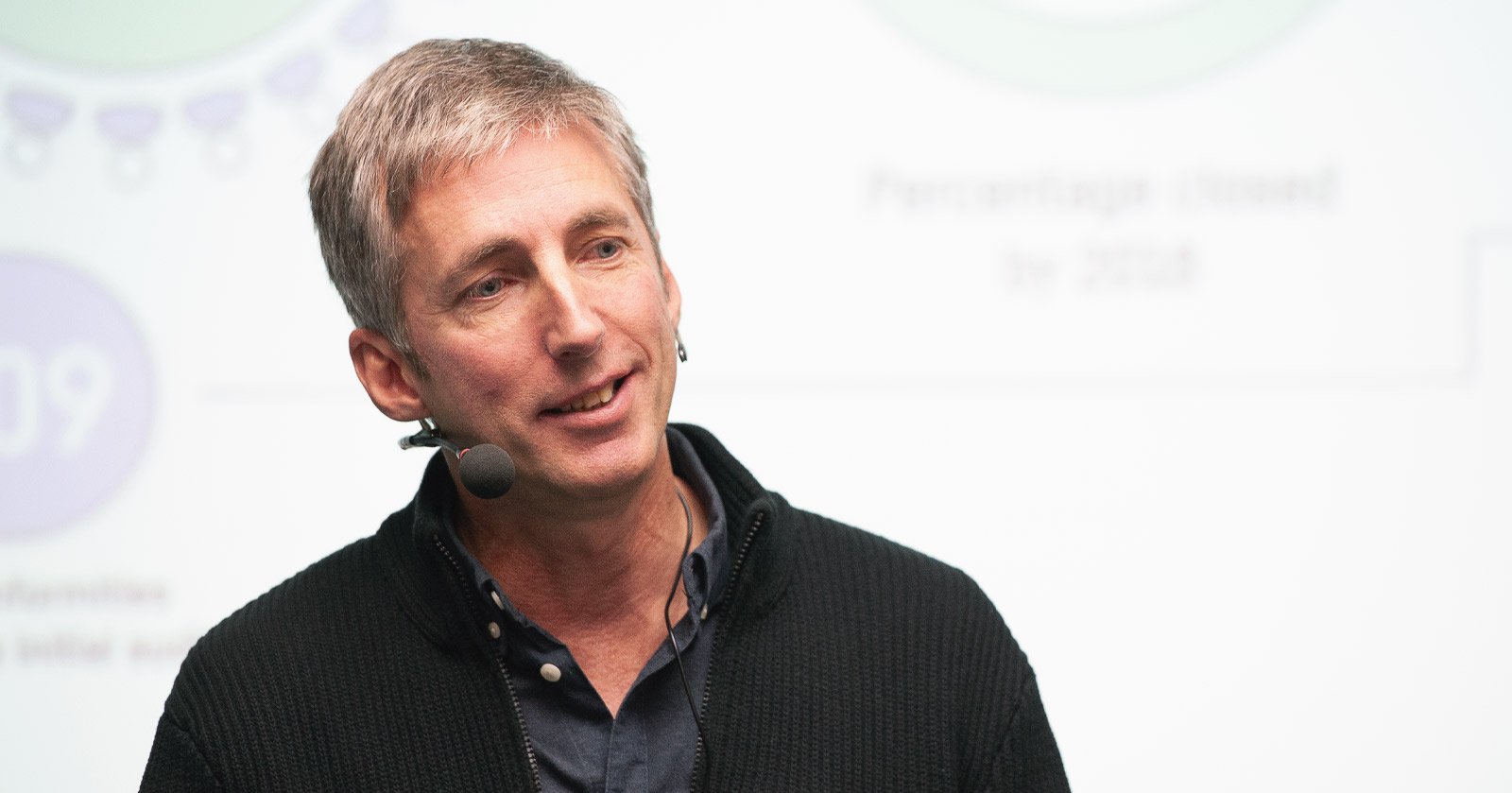Alongside the climate crisis and the loss of biodiversity, toxic pollution is causing the triple planetary emergency that our society faces today, says the United Nations. And according to a recent study, the safe planetary boundaries for pollutants have already been exceeded. We need to act now — but sticking with the traditional banning strategy will not help us win the battle.
Some of the worst chemicals available are Persistent Organic Pollutants, POPs, substances that are used by many different industries, from agriculture to the manufacturing of plastics and also IT products. POPs are known to spread across the globe through soil, water, and air. Their ability to travel far is well-documented — these substances have been found in the Arctic and in Antarctica, far from where they were used. POPs are persistent and accumulate in living organisms including humans. They cause a wide variety of health issues such as cancers, birth defects, and dysfunctional reproductive systems.
To help tackle the POPs, the UN adopted the Stockholm Convention on Persistent Organic Pollutants in May 2001 which came into force three years later. On January 24-28 this year, the review committee for the Stockholm Convention met for the 17th time to discuss risk evaluations and management of certain prioritized substances. Over 250 experts took part in the meeting which agreed on recommending the elimination of the toxic chemical methoxychlor (which was introduced to replace DDT) and taking steps towards eliminating the plastic additive UV-328 and the flame retardant Dechlorane Plus.
These are very important steps forward. When it comes to chemical safety, we all need to work together and the Stockholm Convention plays a role in this. However, the problem with restriction or reduction (with the goal to eliminate) enforced by legislation or global treaties such as the Stockholm Convention, is that the process of adding chemicals to these lists is slow.
About Persistent Organic Pollutants (POPs)
The chemical industry on the other hand moves very quickly. Over 350,000 chemicals and mixtures of chemicals are available on the market today, and the global chemicals market is projected to double between 2017 and 2030. Very few of the chemicals in use today have been sufficiently studied for their impact on humans and the environment, there is simply no way that toxicologists and legislators can keep up with the rapid pace at which chemicals are produced. Therefore, there is no way of knowing how many POPs or other harmful substances there are.
This takes us to the second and even more crucial issue with banning hazardous chemicals: whilst a few identified substances get restricted, we don’t know enough about what replaces them. We tend to think that all chemicals that are not on a restriction list are safer to use. Nothing could be further from the truth. Once a correct independent assessment is carried out, the chemical may very well turn out to be a regrettable alternative. Maybe even worse than the substance it replaced. But by the time that happens, the chemical is likely already being used.
Through our certification, we find solutions to problems we see society struggling with. I think it’s our obligation to do so when we become aware of a problem that we are in the position to do something about. For us, it’s not just about restricting or eliminating bad practices, but also showing what to do or use instead. By getting many businesses to adopt the better approach, we help speed up the transition to more sustainable, circular methods and business models.
Instead of banning chemicals, a much simpler, quicker, and more sustainable way is to have every chemical assessed and proven as a safer alternative before it gets used in products and placed on the market. This is true for all potentially hazardous substances and especially POPs, because when we get to the point where a potential POP chemical is being used, it’s already too late, due to the slow degradability of these chemicals. “They’re on Mount Everest; they’re in the Mariana Trench; they’re in polar bears; they’re in penguins, and they’re in just about every human population on Earth,” says David Bond, a cultural anthropologist and professor at Bennington College, in an article by the Center for Biological Diversity.” If we continue to only restrict a few identified hazardous chemicals, not knowing enough about what substitutes them, then we will only ever be reactionary to chemicals when they show themselves to be hazardous. This is unnecessary because we can actually be in control.
“They’re on Mount Everest; they’re in the Mariana Trench; they’re in polar bears; they’re in penguins, and they’re in just about every human population on Earth”
With TCO Certified, we require that information about substances is gathered, including both public information and confidential information from the chemical manufacturer. An independent toxicologist uses the information to assess the potential effect the substance may have on human health and the environment. The degree of persistence is also assessed. This means that all POP chemicals would be identified and disapproved, while approved substances are added to the public TCO Certified Accepted Substance List, and can be used in certified products. Even if persistence was a data gap, meaning the available data was not sufficient to make a decision, the chemical would be treated as hazardous and be disapproved.
The first version of TCO Certified Accepted Substance List was launched in 2015 and focused on flame retardants. At first, the list collected ten independently assessed safer alternatives. This number has steadily increased to 21 and covers non-halogenated flame retardants added to product housing and printed circuit boards.
Three years later, in 2018, we expanded TCO Certified Accepted Substance List to also include plasticizers. One of the reasons why we took this step was that four phthalates were restricted through the EU RoHS legislation, and we saw that industry was preparing to use equally or potentially equally hazardous alternatives.
In December 2021 we expanded the scope of the list once more as part of the new generation of TCO Certified. This time, we added cleaning solvents used on production lines at manufacturing facilities since we saw hazardous chemicals that had for a long time been banned in Europe and elsewhere were being used in factories in developing countries, where the majority of production is today.

Reading this you may consider TCO Certified Accepted Substance List a little sideshow of a solution since it doesn’t carry the punch of a global ban. However, what our positive list strategy does is showing businesses and public authorities that it’s possible to turn the table on the standard way that chemicals are handled. When thousands of certified models are required by the global purchaser community, it does prove if nothing else, that if the IT industry can adapt to an accepted substance list strategy then so can other industries. Therefore, we made TCO Certified Accepted Substance List public and available to everyone, regardless of industry or product area. It is a contribution to both industry and society at large.
The chemical industry will say that the exposure risk of using hazardous chemicals can be controlled. However, even if the risk can be reduced, it can’t be eliminated. The spread of POPs in humans and the environment is proof of this. The only way to eliminate the risk of exposure is to not use these chemicals at all. Chemical assessments are sometimes avoided because it costs time. Clearly, the cost on humans and the environment has become far greater.
Learn more about our criteria and how TCO Certified can help you improve chemical safety and other sustainability issues.

Stephen Fuller is our expert on hazardous substances and socially responsible manufacturing. When he’s not working with criteria development or following up on the progress, he likes to play guitar and write songs.





